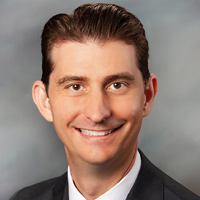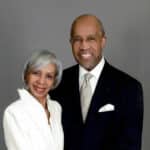
As the Corona Crash pummeled the stock market in February of last year, many financial advisors were doing what we normally do during big market downturns: Talking a very small number of clients off a ledge and, for the majority of our client base, reiterating their long-term goals, revisiting their investment and retirement assumptions, discussing portfolio rebalancing and otherwise counseling them to “stay” the proverbial “course.”
Almost universally, these conversations ended with a mutual agreement — maybe “hope” is a better word — that life would be back to normal soon, and perhaps the end of the summer would be a good time to circle back and take a fresh look at their situation.
As luck would have it, the end of the summer did see the S&P 500 back at its pre-crash highs; but life has yet to make it back to what used to be normal. For some aspects of the financial planning profession, it never will be.
Discovering Old Technology
While financial advisors, as a group, are not famous for living on the cutting edge of technology, the idea of a “tech stack” — and that we all need one — had become a widely discussed topic over the last couple of years prior to the COVID shutdowns.
Still, I had never used an electronic signature in my practice prior to last year (DocuSign was invented in 2003.) If I were being defensive, I would say this was driven by client preferences for live meetings. There was just a lack of demand for the technology. If I were being brutally honest, I would say it was driven by the fact that I never asked a client if they would like to sign their documents electronically — but we will keep that amongst ourselves.
Instead, I would host an hour-long in-person signing meeting where my client service manager would walk the clients through all the account applications, transfer paperwork, investment policy statements, etc. I can rest easy knowing that I am in the majority on this. You did it too!
Same goes for virtual meetings. Zoom had been around for almost a decade when I, along with the rest of the world, was forced to discover it last year. I held my very first virtual client meeting on April 1, 2020. A couple of days later, our firm closed the offices and temporarily went 100% remote for all personnel. Luckily, we found that Microsoft had this awesome product called Teams (released in 2016) that allowed us to stay in touch with one another while working remotely.
In a matter of weeks, tech tools like Zoom meetings and e-signing went from virtually non-existent to a part of daily life for most of the advisors I communicate with. While we all have seen clients trickling back into our offices for in-person meetings, there is no going back to the “old days” of 2019. The COVID lockdowns forced us to discover — some might say, “prove” — that we can operate our businesses remotely. This first, forced trial run was not ideal and not everyone liked working from home, but we showed it to be possible.
In fact, I established three new client relationships in 2020 with folks I have never met in person (my previous record was zero.) All three of these families live in my city, but they could live anywhere, and the fully remote onboarding process would have been the same. This opens endless possibilities for the future of how financial planning is delivered, and how we will come to define our pool of potential clients.
What Do Clients Think?
While the COVID lockdowns had no effect on client interactions that previously involved only a phone call or email, I was surprised by how many of my retired clients found video conferencing to be a very acceptable alternative to in-person meetings. One client, in his eighties, even led the effort to transition his Lions Club to virtual meetings during the early days of the shutdown. Pretty much everyone has previous experience using FaceTime or Skype or the like for communicating with friends and family, but I wondered how seamlessly we would move from personal to business usage.
”I was surprised by how many of my retired clients found video conferencing to be a very acceptable alternative to in-person meetings.”
While most of my clients, both new and existing, report that they still prefer in-person meetings, when possible, they now feel empowered to choose how they interact with me. To that end, I now ask all new clients if they would like to e-sign their documents. So far, not one has said no.
New Planner Possibilities
There was a time, way back at the end of 2019, when I would have said that someone who wanted to work from home full time would have poor luck finding a role in the financial planning profession. Way back then, I was right.
One of the reasons we are facing an advisor replacement crisis is because virtually every role, from entry level to senior executive, has historically required us to be in our offices during business hours. This has eliminated a vast number of parents, young workers, people in career transition — really anyone who requires some flexibility in their work schedule — from joining our ranks. What the events of 2020, and our collective response to them, have shown is that a fully remote job in our field is suddenly not only a thing, but a thing in demand.
A quick LinkedIn job search with the filters “Full-time,” “Remote” and “Financial Services” yielded more than 66,000 results. Of course, not all of these will be client-facing roles, or be directly involved in the financial planning process. But each opportunity will allow someone a glimpse into some corner of our larger world. How many of these roles will be filled by candidates who would have otherwise never investigated financial services as a career choice? Who knows, but it’s certain to be more than ever before.
As with everything new, there is give and take in the implementation. For now, our firm has no plans to add completely remote staff. Just as tech tools and virtual communication affects client relationships, they affect our relationships with coworkers as well. We have found that the depth and efficiency of collaborations is just not there in a virtual environment. Plus, we like each other.
That is not to say we are unchanged by the events of 2020. We have expanded our ability and permitted frequency for staff to work from home on a temporary basis. We are all more comfortable with our technology and more adept at employing it with clients. COVID accelerated tech adoption and expanded our choices about how we interact. That is a fabulous outcome for a less than fabulous time in history.
DJ Hunt, CFP is a fee-only financial advisor with Moisand Fitzgerald Tamayo, LLC. in Melbourne, Florida. His clients include working professionals, business owners and retirees. DJ can be reached at dj@moisandfitzgerald.com.







